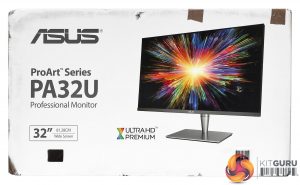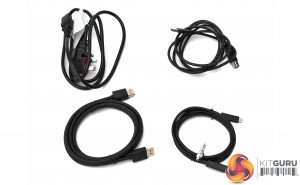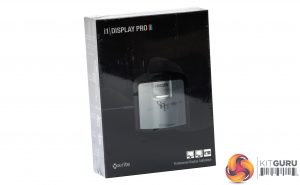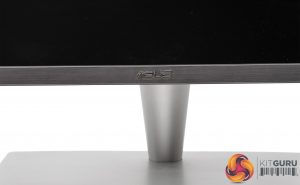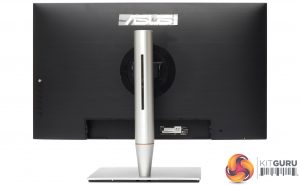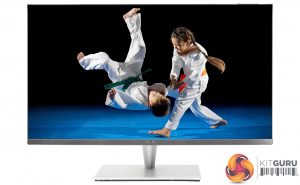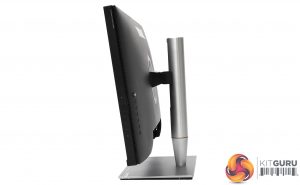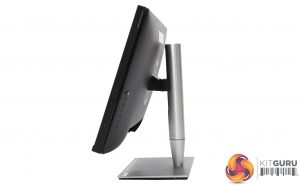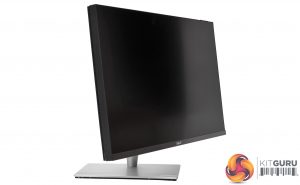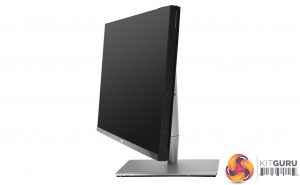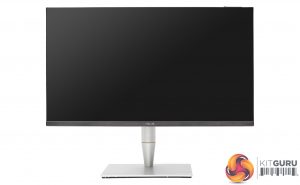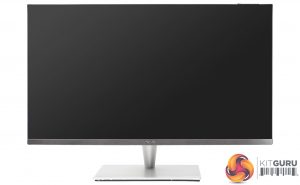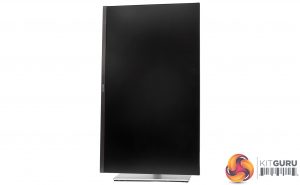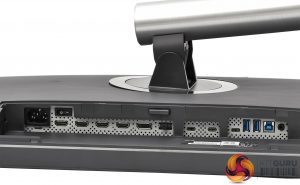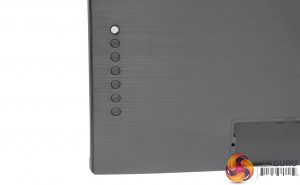The ASUS ProArt PA32UC comes in a solid box that's devoid of the usual bling we encounter with gaming screens.
The cable inclusions are relatively mundane, with just a DisplayPort, USB upstream, and kettle lead coming in the box. There is also a USB-C / Thunderbolt 3 cable, too.
However, just in case you were in any doubt about the professional intentions of this monitor, ASUS has bundled an X-Rite i1 Display Pro calibration puck in the box as well.
The PA32UC exudes serious but stylish build quality. The bezel is very thin at the top and sides. There's a very solid support arm and sturdy base on which the screen turns.
Plenty of adjustment is available. You can tilt the screen five degrees forward or 23 degrees back. It rotates 60 degrees in either direction on its base. The panel can be raised or lowered through a 130mm range. It's also possible to rotate the display into portrait orientation.
There's a veritable army of video connections on the underside of the screen. Alongside four HDMI 2.0b ports is a single DisplayPort 1.2. Underneath a plastic cover is a USB port, which is presumably for firmware updates but isn't mentioned in the specification. The next two ports are the Thunderbolt 3 / USB Type-C connections for the screen. There's no indication which is an input and which an output, so presumably both can be either.
The next group of ports includes the USB Type-C downstream, two Type-A downstream, and a Type-B for the upstream. Finally there's a minijack audio output for headphones, so you can listen to digital audio from the video cabling privately.
Lots of monitors are now opting for simplicity in their controls, but the PA32UC seems to be going in the opposite direction. There is a joystick at the top on the rear right of the panel, but beneath it are no fewer than six buttons. The bottom one is for toggling power, but the other five are initially mysterious in their purpose, as they have no other marking than alternately bearing a dot you can feel with your fingertip. So next let's find out what they do and which features are available from the menus they control.
 KitGuru KitGuru.net – Tech News | Hardware News | Hardware Reviews | IOS | Mobile | Gaming | Graphics Cards
KitGuru KitGuru.net – Tech News | Hardware News | Hardware Reviews | IOS | Mobile | Gaming | Graphics Cards
